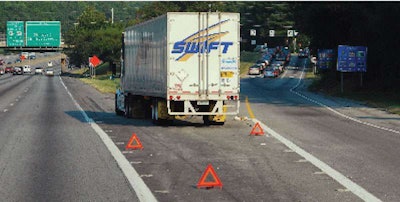
The initiative will provide continuing public information and education outreach to help educate drivers about the revised Move Over Law, which formerly applied only to stopped emergency vehicles.
The change, enacted this year, is intended to increase safety for not only first responders but also roadway workers, truck drivers and others whose vehicles are stopped along any four-lane road.
The “Move Over Law,” also known as “Scott’s Law,” has been in effect 15 years, yet officials say too many drivers ignore it.
The 2002 law originally mandated that upon approaching a stopped, authorized emergency vehicle, a driver should make a lane change away from the stopped vehicle, when safe to do so. If it’s impossible or unsafe to change lanes, a driver should slow down and proceed with caution.
 Chicago Fire Lt. Scott Gillen
Chicago Fire Lt. Scott GillenIn 2017, the law was revised, meaning that colliding with any vehicle stopped on the side of a highway or interstate with flashing emergency lights could lead to stiff penalties: a fine of up to $10,000, two-year loss of driving privileges and possible incarceration.
The law had been originally passed in honor of Chicago Fire Department Lt. Scott Gillen, who was struck and killed by a drunk driver in 2000 while helping at a crash on the Dan Ryan Expressway. The driver, Carlando Hurt, was later sentenced to 13 years in prison for reckless homicide.
To get the word out about the revised law, Illinois Governor Bruce Rauner, along with officials from the Illinois Tollway, Illinois Department of Transportation, Illinois State Police, Illinois Secretary of State’s office and AAA, held a news conference on Dec. 6 to announce the start of the new “Give Them Distance” safety campaign.









